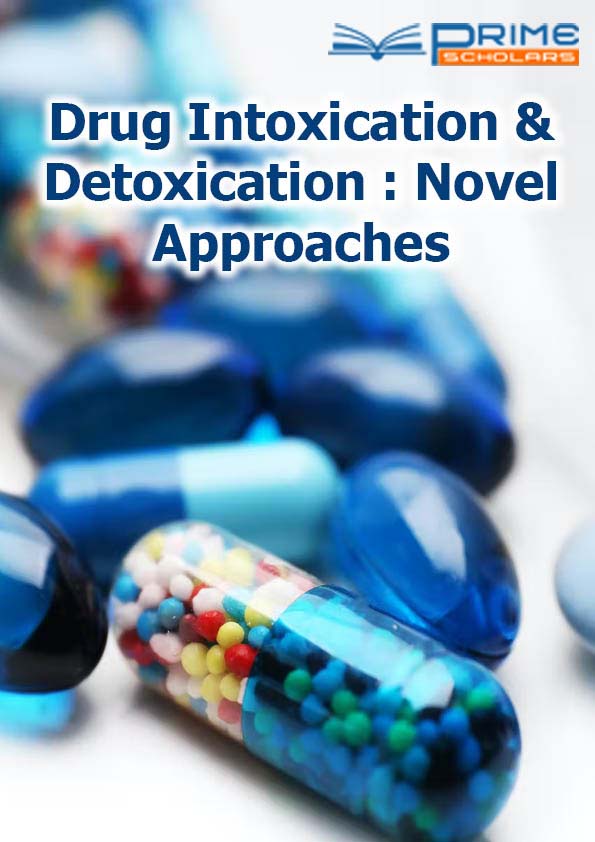Opinion - (2023) Volume 4, Issue 3
In Vitro and In Silico Investigations of Antimicrobial Saponins: A Survey
Jinhue Li*
Department of Chemical and Biological Engineering, State University of New York, USA
*Correspondence:
Jinhue Li,
Department of Chemical and Biological Engineering, State University of New York,
USA,
Email:
Received: 30-Aug-2023, Manuscript No. DIDNA-23-17903;
Editor assigned: 01-Sep-2023, Pre QC No. DIDNA-23-17903 (PQ);
Reviewed: 15-Sep-2023, QC No. DIDNA-23-17903;
Revised: 20-Sep-2023, Manuscript No. DIDNA-23-17903 (R);
Published:
27-Sep-2023, DOI: 10.36648/DIDNA 4.3.25
Introduction
Anti-infectives are important drugs for treating infections and
related diseases. Regardless, due to the overuse of antibiotics,
anti-drug resistance has become a serious and serious problem.
The development of new anti-infective agents is an important
area of research and conventional products are one
of the primary sources of new anti-infective agents. Among
other perhaps popular antibacterial products, saponins have
received a lot of attention due to their amazing and broad antibacterial
properties.
Description
Despite the fact that there are several studies on antibacterial
saponins, this examination hastily presents the expected
antibacterial systems of saponins from the perspective of exploratory
regeneration and subatomic recovery to put forward
a full context of the field. This investigation presents ongoing
advances in the development and reuse of anti-infective agents
from conventional products. Emphasis is placed on recently
discovered antibacterial saponins as well as the synergistic effects
of some saponins with conventional antimicrobials. Antibiotics
are drugs that treat bacterial contamination by killing
them or slowing their growth. They are also considered some
of the best chemotherapy experts during the existence of human
medicine and have been for some time. China, Greece
and Egypt are famous for using rotten bread to heal wounds.
Regardless, it was only after Alexander Fleming discovered
penicillin in 1928 that the period of widespread availability of
conventional antimicrobial drugs truly began. This era reached
its “glory period” between the 1940s and 1960s. Since then,
a large number of anti-infective agents from microorganisms
have been discovered and applied clinically. For example, macrolides,
antibiotics, aminoglycosides and chloramphenicol have
been found in bacteria. Infectious microorganisms also provide
humans with large amounts of common anti-infective agents,
such as cephalosporins. Likewise, various manufactured antitoxins
have been created, promoted by conventional products,
such as quinolones or nitrofurans. The use of antibiotics has
changed clinical medicine and lifestyle; before anti-infective
drugs, most deaths in the United States during the 20th century
were related to unavoidable diseases. Antibiotics also provide
a reliable method of controlling disease after careful workup,
significantly reducing post-surgical problems and increasing
the average human lifespan by more than 10 years in 50 years
after the use of antitoxin.
Despite its antibacterial properties, saponins can work with
various anti-infective agents to enhance their mobility. Collaborative
energy between known antibiotics and conventional
products is also considered one of the most effective ways to
overcome antibiotic resistance. It found that saponins from
Sapindus mukorossi could enhance the antibacterial ability of
nitrofurantoin (NFT). NFT is a broad-spectrum antiprotozoal
drug commonly used to treat urinary tract diseases. Cell damage
testing on P. aeruginosa strains showed that just by using
NFT (5 mg/L), the viability of bacterial cells was reduced by
about 35%.
Conclusion
However, its antibacterial ability was significantly improved
with the separation of saponins. Experimental results show
that when using 100 mg/L saponin, cell viability is reduced by
more than 75%. They noticed the shape and morphology of
each bacterial cell using TEM and AFM. From Figure 3B, NFT
alone affects cell morphology, but when saponin is removed,
folds and waves appear on the cell surface.
Citation: Li J (2023) In Vitro and In Silico Investigations of Antimicrobial Saponins: A Survey. Drug Intox Detox: Novel Approaches.
4:25.
Copyright: © 2023 Li J. This is an open-access article distributed under the terms of the Creative Commons Attribution License,
which permits unrestricted use, distribution, and reproduction in any medium, provided the original author and source are
credited.
